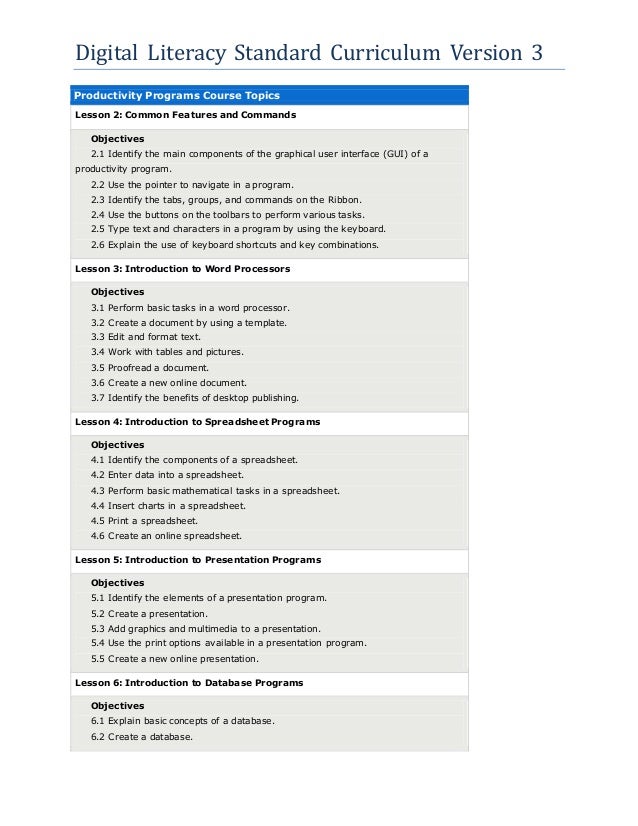Digital Literacy Productivity Programs Answers To Logo
- Digital Literacy Assessment Answers
- Digital Literacy Productivity Programs Answers To Logout
- Digital Literacy Productivity Programs Answers To Logos
Digital literacy programs are typically used for five categories of learning: K-12 education, adult education, job training, government work, or public awareness and community engagement. No matter which type of program you’re running, you will need to know how to create an effective program.If you’ve already, you’ll need to evaluate its effectiveness.
That means making sure it covers all the basic principles of and allows students to easily retain the information they’ve learned long after your program is over. In this article, we’ll going to break down all the aspects of successful digital literacy programs. We’ll start with a general explanation of what a digital literacy program is, including 5 basic principles of digital literacy.

Then we’ll help you assess your own program by listing 5 ways to tell if your program is effective and 25 skills a learner should gain from an effective digital literacy program. Read on to spruce up your program today! What is a digital literacy program?Digital literacy programs are educational sessions that help to train those with the inability to make use of digital technologies and the Internet independently. They teach digital skills that can be taken away from the lessons, and then applied to the user’s life, making tasks easier, faster, and safer.If you’re planning on creating a digital literacy program of your own, you must first understand some of the basic principles of digital literacy. 5 basic principles of digital literacy1. Comprehension – a basic understanding of ‘what it is’ and ‘how to use it.’This is the first step to understanding digital literacy is a basic comprehension of ideas, terms, and concepts. Many people simply haven’t had enough of an opportunity to access digital technologies, so they need an introduction to basic digital technology principles.
These include how computers work, how to access the Internet, and so on. These concepts need to be taught before a deeper understanding of technology can be reached by the student.
Digital Literacy Assessment Answers

Digital Literacy Productivity Programs Answers To Logout
Communication and social connection – talking to others.One of the most basic reasons why people want to get online and use digital technology in the first place is to get (or keep) in touch with others. Knowing about the different ways you can interact with others through digital technology is key to expanding your digital literacy skills. From email services to social media networks to Internet-based messaging and chat apps, there are tons of ways you can make digital connections.However, knowing how to make online connections is just the tip of the iceberg.
There are several other very important skills that contribute to a full understanding of online communication. These include knowing how and when it’s socially appropriate to contact people online, the proper etiquette for dealing with people online, and how to avoid paying fees unnecessarily for online communication services. Interconnectivity – how devices work together.Interconnectivity is something that is often skimmed over or ignored altogether in lessons on technology, yet it is extremely important to teach. How do actions I complete on a website then translate to a corresponding app on my mobile device? How can I access stored data on different devices?
The answers to these kinds of questions are not always apparent to everyone, especially those who haven’t had access to their own personal devices. Storage and retrieval – saving information and finding it later.Even the most talented navigation of the Internet is quite meaningless if you don’t know how to store information or find it later. In addition, anything you create on your own needs to be saved and stored for a later date. You need to know not only how to keep something, but also how to keep it secure and safe so that other people can’t use it without your permission. Creation – making your own content and presenting it.Once you’ve mastered some basic digital skills and concepts, creating your own digital content is a vital next step. This can be something as simple as writing a word processing document, or a more complex operation such as building your own functioning website.If you want to learn more, we’ve got a great article explaining.
Digital Literacy Productivity Programs Answers To Logos

Now, we will give you a list of the 5 characteristics of an effective digital literacy program. Compare them to your own teachings, so you can tell if your lesson plans will make an impact on your students’ lives. 5 ways to tell if your digital literacy program is effective 1. You have the necessary resources for interactive digital learning.No digital literacy program can work without allowing students to actually use devices, either their own or ones you provide for them. Your program should be set up in a space where your learners can bring their own devices and use them comfortably, or else use on-hand devices as they go along with as little sharing as possible. Teaching digital skills simply can’t be done in a traditional lecture style; it must allow the learners to interact with the actual technology, replicating your examples as you go along.2. Learners can demonstrate their knowledge by performing the skills you teach during, and after, the lesson.Your digital literacy lessons should have some way to ensure that your learners can remember what they learned and put it into practice, even long after the class is over.
Consider having some way to follow up with your students and allow them to practice their skills. Language patch football manager 2005 mac download.